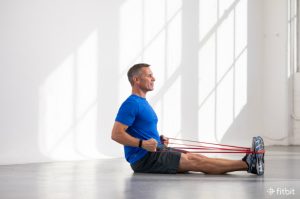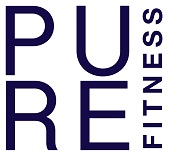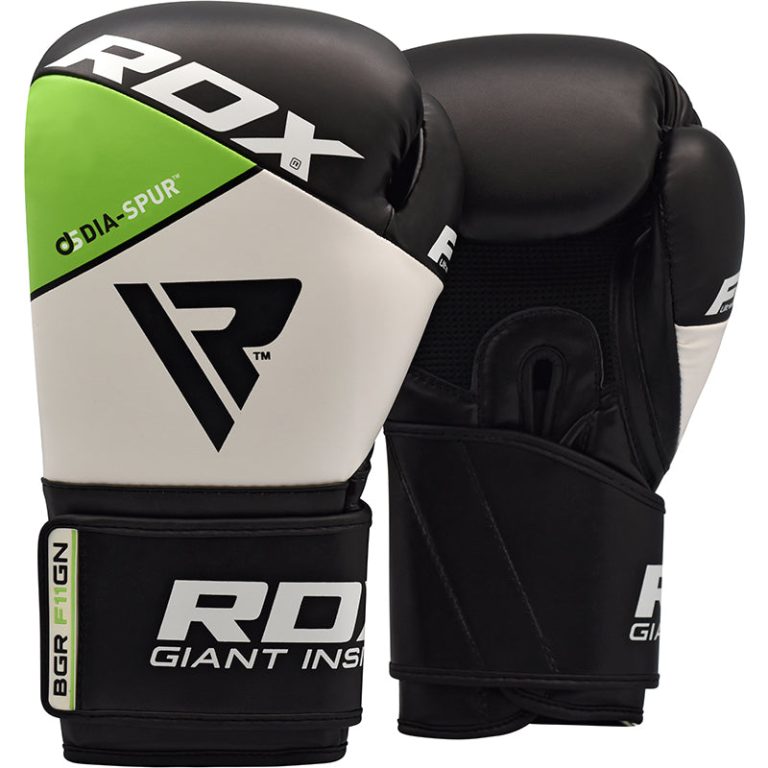You’re probably familiar with weightlifting and other traditional resistance training methods, but have you ever wondered about those colorful elastic bands you see people using at the gym or during their home workouts? These are known as strength and resistance bands, and they have gained immense popularity in recent years due to their effectiveness and versatility in enhancing strength and building muscle. Whether you’re a beginner or a seasoned gym-goer, understanding the benefits and uses of these bands can undoubtedly take your fitness routine to a whole new level. So, let’s delve into the world of strength and resistance bands and explore how they can help you achieve your fitness goals. Strength and resistance bands are versatile pieces of exercise equipment that are used to provide resistance and added challenge during workouts. They are elastic bands that come in various shapes and sizes, and are designed to help with strength training, muscle activation, rehabilitation, and physical therapy. Whether you are a beginner or an advanced fitness enthusiast, strength and resistance bands can be a valuable addition to your fitness routine.

Table of Contents
ToggleDefinition of Strength and Resistance Bands
Strength Bands: Strength bands, also known as power bands or pull-up bands, are thick and strong elastic bands that are primarily used for strength training exercises. They come in a variety of resistance levels, ranging from light to heavy, making them suitable for individuals of all fitness levels. Strength bands are commonly used for exercises such as pull-ups, squats, bench presses, and deadlifts, as they provide resistance throughout the entire range of motion.
Resistance Bands: Resistance bands, on the other hand, are thin and lightweight elastic bands that provide resistance when stretched. They are typically used for toning, rehabilitating injuries, and increasing flexibility. Resistance bands are available in different levels of resistance, making it easy to choose the one that suits your fitness goals. They can be used for a wide range of exercises, including bicep curls, shoulder presses, glute bridges, and lateral walks.
Different Types of Strength and Resistance Bands
Loop Bands: Loop bands, also known as mini bands or hip bands, are flat circular bands that form a loop when wrapped around the legs or other body parts. They are commonly used for lower body exercises such as squats, lunges, and hip thrusts. Loop bands are available in different resistance levels, allowing you to progress as you get stronger.
Tube Bands: Tube bands, also known as resistance tubes or resistance cords, consist of a tube of elastic material with handles at each end. They come in various resistance levels and are versatile for both upper and lower body exercises. Tube bands can be anchored to a door or wrapped around a sturdy object to perform exercises such as bicep curls, tricep extensions, and rows.
Flat Bands: Flat bands, also known as therapy bands or therapy loops, are long and wide elastic bands that do not form a loop. They are commonly used for rehabilitation exercises and stretching. Flat bands are available in different resistance levels and can be used for exercises such as shoulder rotations, leg extensions, and seated rows.
Figure 8 Bands: Figure 8 bands, as the name suggests, are in the shape of a figure 8 when laid flat. They have handles on both ends and are primarily used for upper body exercises like chest presses, bicep curls, and shoulder raises. Figure 8 bands provide a different grip and range of motion compared to other types of bands.
Ring Bands: Ring bands, also known as Pilates rings or magic circles, are flexible rings with handles on the sides. They are often used in Pilates workouts to provide added resistance for exercises such as inner thigh presses, side leg lifts, and arm circles. Ring bands are great for improving strength, flexibility, and overall muscle tone.
Mini Bands: Mini bands, as the name suggests, are smaller versions of loop bands. They are often used for activating and strengthening smaller muscle groups, such as the gluteus medius and rotator cuff muscles. Mini bands are commonly used for exercises like clamshells, lateral leg raises, and shoulder external rotations.
Materials Used in Strength and Resistance Bands
Strength and resistance bands are made from a variety of materials, each with its own unique characteristics. Some common materials used include:
Natural Latex: Natural latex bands are the most common type of bands available. They are known for their durability, elasticity, and resistance to wear and tear. Natural latex bands are often recommended for their high quality and long lifespan.
Fabric: Fabric bands are made from a combination of materials, including fabric and latex or rubber. They are often preferred for their softness and comfort, making them ideal for individuals with sensitive skin. Fabric bands are also less likely to roll or slip during exercises.
Rubber: Rubber bands, also known as rubber tubing, are typically made from synthetic rubber materials. They offer consistent resistance and durability, making them suitable for a wide range of exercises. Rubber bands are often used in physical therapy and rehabilitation settings.
Silicone: Silicone bands are a newer type of resistance band made from silicone material. They are known for their durability, non-slip grip, and resistance to sweat and moisture. Silicone bands are often preferred by individuals looking for a more comfortable and secure workout experience.
Nylon: Nylon bands, also known as fabric-covered bands, are made from fabric that is wrapped around a latex or rubber core. They offer a combination of durability, elasticity, and comfort. Nylon bands are often used for exercises that require more resistance and stretchability.
Benefits of Using Strength and Resistance Bands
Versatility: One of the main benefits of using strength and resistance bands is their versatility. They can be used for a wide range of exercises, targeting various muscle groups throughout the body. Whether you want to strengthen your upper body, lower body, or core, there are exercises that can be performed with bands to achieve your fitness goals.
Portability: Strength and resistance bands are lightweight and compact, making them easy to take with you wherever you go. Whether you are traveling, going to the gym, or working out at home, you can easily pack them in your bag or suitcase. This convenience allows you to maintain your fitness routine even when you’re on the go.
Adjustable Resistance: One of the key advantages of using strength and resistance bands is the ability to adjust the resistance level. Bands of varying thickness and tension can be used to increase or decrease the resistance, enabling you to customize your workout intensity. This makes them suitable for individuals at different fitness levels, from beginners to advanced athletes.
Muscle Activation and Stabilization: Strength and resistance bands provide constant tension throughout the entire range of motion, which helps activate and engage the targeted muscles more effectively. They also improve stability and balance by challenging the muscles to work against the resistance offered by the bands. This can lead to improved muscle strength, endurance, and overall coordination.
Low Impact on Joints: Unlike heavy weights or machines, strength and resistance bands offer a low-impact form of exercise that is gentle on the joints. They reduce the risk of joint strain or injuries, making them suitable for individuals with joint issues or those who prefer low-impact workouts. Bands allow for smooth and controlled movements, reducing the stress on your joints while still providing a challenging workout.
Suitable for All Fitness Levels: Strength and resistance bands are suitable for individuals of all fitness levels, from beginners to advanced exercisers. They can be easily modified to match your current fitness level and gradually increased in intensity as you become stronger. This makes them a versatile option for anyone looking to improve their strength, flexibility, and overall fitness.
Exercises and Workouts with Strength and Resistance Bands
Upper Body Exercises: Strength and resistance bands can be used for a variety of upper body exercises. Some examples include bicep curls, tricep extensions, chest presses, shoulder raises, and rows. By incorporating bands into your upper body workouts, you can effectively target muscles such as the biceps, triceps, chest, shoulders, and back.
Lower Body Exercises: For lower body strengthening, bands can be used to perform exercises such as squats, lunges, glute bridges, leg presses, and calf raises. Bands provide resistance to the muscles of the lower body, including the quadriceps, hamstrings, glutes, and calves. They can help improve strength, stability, and balance in the lower body.
Core and Abdominal Exercises: Strength and resistance bands are great tools for targeting the core and abdominal muscles. Exercises such as standing oblique twists, seated Russian twists, plank shoulder taps, and bicycle crunches can be performed using bands. These exercises engage the muscles of the core, including the abdominals, obliques, and lower back.
Full Body Workouts: With the help of strength and resistance bands, you can create effective full body workouts that engage multiple muscle groups simultaneously. Some full body exercises include squat to overhead press, deadlift with row, burpees with bicep curls, and standing woodchops. These exercises provide a total body workout, targeting muscles from head to toe.
Stretching and Flexibility Exercises: In addition to strength training, strength and resistance bands can also be used for stretching and flexibility exercises. They can assist with deepening stretches and improving flexibility in various muscle groups. Examples of stretching exercises include hamstring stretches, quad stretches, shoulder stretches, and chest stretches. Bands can provide added resistance during these stretches, allowing for a deeper and more effective stretch.
Strength and Resistance Bands for Rehabilitation and Physical Therapy
Muscle Activation and Rehabilitation: Strength and resistance bands are widely used in physical therapy and rehabilitation settings. They can be used to aid in muscle activation and rebuilding strength in injured or weakened muscles. Bands can be incorporated into exercises that target specific muscle groups and help individuals regain strength and function after an injury or surgery.
Injury Prevention and Recovery: Strength and resistance bands are not only beneficial for rehabilitation but can also help prevent injuries and aid in recovery. By incorporating bands into your regular workout routine, you can strengthen the stabilizing muscles around your joints, improving joint alignment and reducing the risk of injury. Bands can also be used as part of a recovery program, gradually increasing resistance and rebuilding strength after an injury.
Tips for Choosing the Right Strength and Resistance Bands
Resistance Level: When choosing strength and resistance bands, it is important to consider the resistance level that suits your fitness goals and current strength. Bands are available in different colors or resistance levels, such as light, medium, heavy, and extra heavy. If you are a beginner, it is recommended to start with a lighter resistance band and gradually progress as you get stronger.
Length and Width: The length and width of the bands can vary, and it is important to choose the right size for the exercises you plan to perform. Longer bands allow for a greater range of motion and can be used for exercises that require more space, such as lunges or squats. Wider bands provide more resistance and stability, making them suitable for exercises that require more strength, such as hip thrusts or glute bridges.
Durability and Quality: It is important to choose bands that are made from high-quality materials and are durable in order to withstand frequent use and stretching. Look for bands that are tear-resistant and have good elasticity. Bands made from natural latex are generally more durable and long-lasting compared to cheaper alternatives.
Comfort and Grip: Choose bands that are comfortable to use and provide a good grip. Bands with handles or textured surfaces can offer a better grip, preventing them from slipping during exercises. Consider bands that are soft and gentle on the skin, especially if you have any sensitivities or allergies.
How to Use Strength and Resistance Bands
Basic Exercises: To get started with strength and resistance bands, you can perform basic exercises such as bicep curls, squats, or chest presses. These exercises can be easily modified to include bands by either wrapping the bands around your hands or anchoring them to a sturdy object.
Safety Precautions: When using strength and resistance bands, it is important to follow proper safety precautions to prevent injuries. Inspect the bands for any signs of wear or damage before each use. Use proper form and technique during exercises to avoid straining or pulling muscles. Gradually increase the resistance level as you get stronger to prevent overexertion.
Progressive Overload: To continue challenging your muscles and making progress, it is important to progressively overload your workouts. This can be done by gradually increasing the resistance of the bands, performing more reps, or incorporating more challenging exercises. Progressive overload helps prevent plateaus and promotes continual improvement in strength and fitness.
Conclusion
Strength and resistance bands are versatile and effective tools that can be used for a variety of exercises and fitness goals. Whether you are looking to build strength, improve flexibility, rehabilitate an injury, or simply add variety to your workouts, bands can offer a convenient and accessible option. With the ability to customize resistance levels, band exercises can be suitable for individuals of all fitness levels. So why not give strength and resistance bands a try and see the benefits they can bring to your fitness journey?






